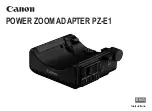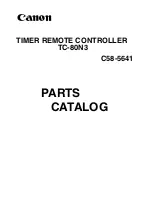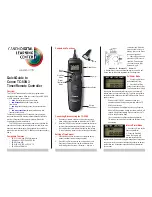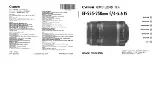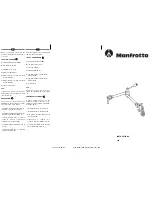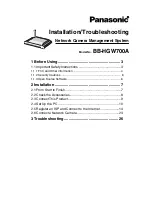
7
Vandal resistant camera housing and accessories
desired position using the adjustment
screws (Fig. 2.1).
3. Fix the camera to the plastic joint using the
1/4” screw (Fig. 2.2).
4. Make the electrical connections and final
adjustments to the camera then close the
housing.
Heater installation
T h i s s e c t i o n d e s c r i b e s h o w t o i n s t a l l t h e
optional heater in housings that do not have
them.
The heater kit can be supplied with working
voltages of 12V DC/24V AC or 115/230V AC
and includes the pre-wired heating element, the
support plate and the screws for fixing the kit.
1. Open the housing as described before.
2. Fix the heating element (Fig. 3.4) to the
pre-arranged seat on the housing (Fig. 3),
using the support (Fig. 3.2), the screw
(Fig. 3.1) and the washers (Fig. 3.3)
supplied with the kit.
3. Using the adhesive wire-holder supplied
with the kit, position the heater wiring so
t h a t i t a l l o w s t h e c o r r e c t v i e w o f t h e
camera.
4. Connect the pre-wired heating element
using the terminal prepared on the support
circuit (Fig. 4).
5. Close the housing.
The circuit is also able to provide
the power supply for a camera.
While powering the circuit from
an external source, pay attention to the
type of working voltage and use the
correct power supply kit, according to
requirements.
C a m e r a p o w e r s u p p l y
installation
This chapter describes how to install the camera
power supply option into the housing. There are
two types of camera power supply depending
on requirements.
One model has an input voltage of 100-240V AC
with an output voltage of 12V DC, 1A (Fig. 6), the
other has an input voltage of 230V AC and an
output voltage of 24V AC, 400mA (Fig. 7).
1. Open the housing as described before.
2. Disconnect all the cables connected to the
standard support circuit.
3. Replace the standard circuit with that
supplied with the kit (Fig. 8.1) using the
appropriate screws (Fig. 8.2).
4. Using the fixing bracket (Fig. 8.4), the nuts
and the washers supplied with the kit (Fig.
8.5), mount the power supply (Fig. 8.3) to
the pre-arranged seats (Fig. 8).
5. Insert the 6-pin connector (Fig. 8.6) at the
end of the cable into the corresponding
socket on the support circuit, shown as J2
(Fig. 5).
6. On the new circuit connect all the wiring
that had been disconnected previously.
7. Close the housing.
When the circuit is powered by
an external source care must be
t a k e n t o t h e t y p e o f v o l t a g e
used and, depending on requirements,
to the correct power supply kit.
ENGLISH
H
MNVCAVTPSC_0604 2-03-2006 17:13 Pagina 7





















